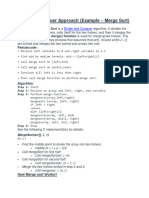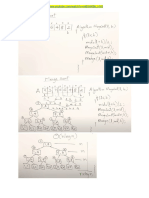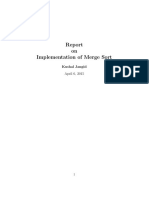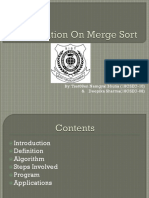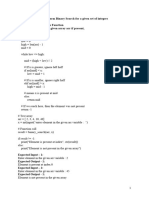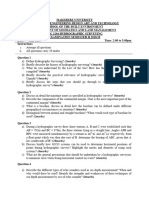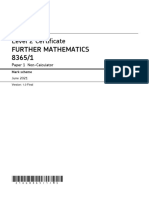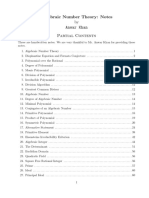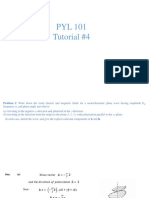0% found this document useful (0 votes)
11 views13 pagesMerge Sort
Merge Sort is a fast sorting algorithm that uses the divide and conquer approach to sort an array by recursively dividing it into halves and merging the sorted halves. The document outlines the definition, steps, algorithm, and a sample program for implementing Merge Sort. Additionally, it highlights applications such as sorting large data sets and external sorting.
Uploaded by
Ellendula DheerajCopyright
© © All Rights Reserved
We take content rights seriously. If you suspect this is your content, claim it here.
Available Formats
Download as PPTX, PDF, TXT or read online on Scribd
0% found this document useful (0 votes)
11 views13 pagesMerge Sort
Merge Sort is a fast sorting algorithm that uses the divide and conquer approach to sort an array by recursively dividing it into halves and merging the sorted halves. The document outlines the definition, steps, algorithm, and a sample program for implementing Merge Sort. Additionally, it highlights applications such as sorting large data sets and external sorting.
Uploaded by
Ellendula DheerajCopyright
© © All Rights Reserved
We take content rights seriously. If you suspect this is your content, claim it here.
Available Formats
Download as PPTX, PDF, TXT or read online on Scribd
/ 13









